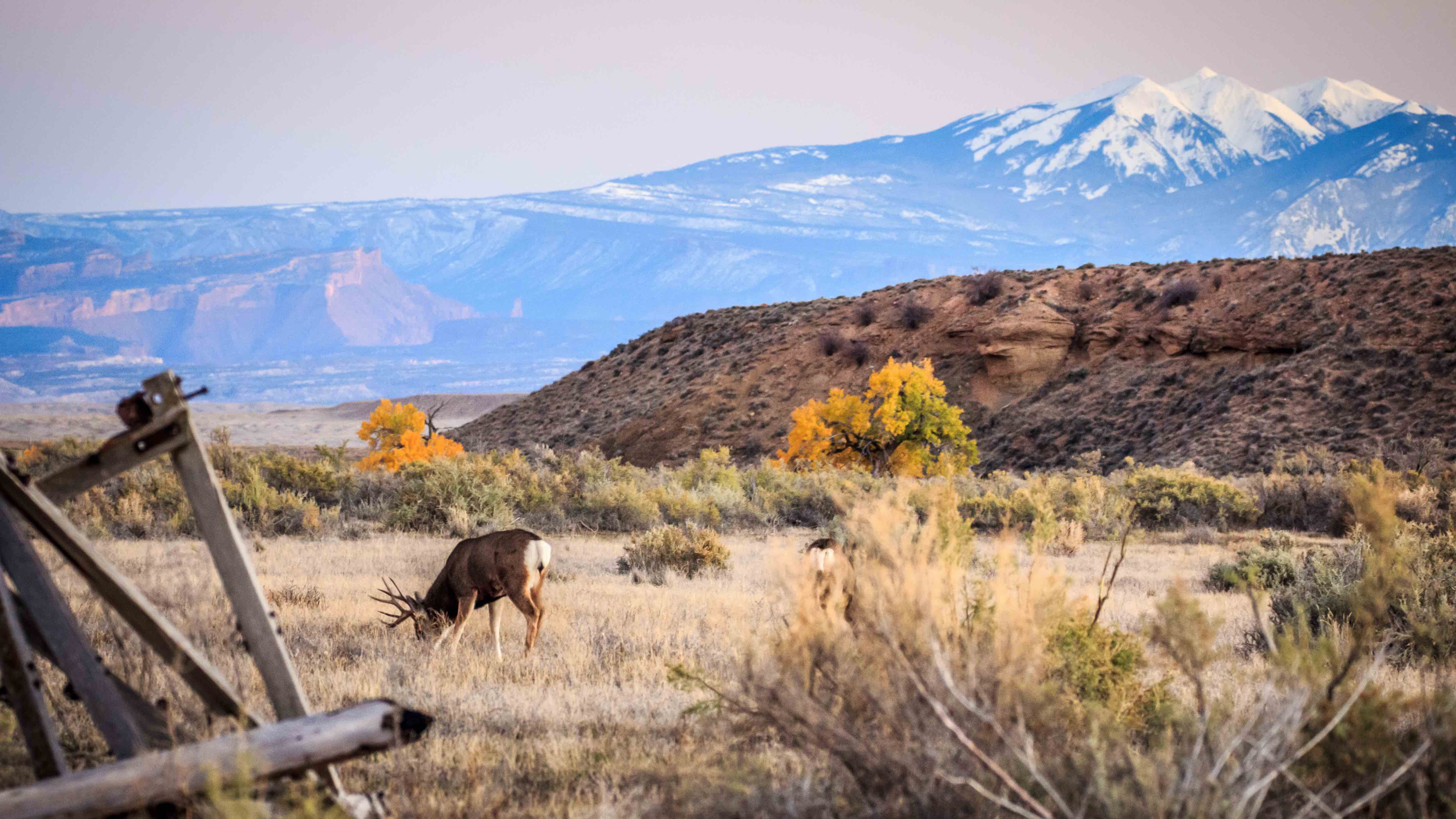Help decide how wildlife is managed in Utah by applying to be on a Regional Advisory Council
Author
Published
10/30/2024
Utah's five Wildlife Regional Advisory Councils (RACs) were created by the Utah State Legislature in the early 1990s to get more public input from citizens at the grassroots level concerning wildlife management, rules and regulations. Each RAC is made up of 12 to 15 people who represent various interest groups or constituencies.
What the RACs do
Each of the five RACs consists of 12–15 members, and those members can serve up to four years on the council. Each RAC holds about six meetings a year. At the meetings, RAC members listen to proposals from Utah Division of Wildlife Resources biologists about hunting, fishing and wildlife management in Utah. They also review any input or feedback from the public that was submitted online before the meetings started.
After voting on each of the proposals, the chairperson for that RAC later presents their region's recommendations to the Utah Wildlife Board. Members of the board consider and discuss the input, and then vote to decide how wildlife is managed in Utah.
RAC meetings usually last several hours. The meetings are held in the evenings, usually on a Tuesday, Wednesday or Thursday night. These meetings are held in person but can also be attended virtually, as needed.
Making Your Voice Heard
Do you have a question, idea or issue you would like the RACs to consider? You have two options to make your voice heard:
- Submit your feedback online. During the public comment period, you may view the DWR's latest presentations to the RACs on the RAC feedback page and submit your comments through the form fields. (The presentations are also available on the DWR YouTube Channel, but comments can only be submitted through the RAC feedback page.) Public comments submitted within the online-comment timeframes will be shared with the RAC and Wildlife Board members at each respective meeting.
- Comment during a RAC or Board meeting. If you wish to comment during a RAC or Board meeting, you must attend the meeting in person — you may not submit comments online during the meeting. When you come to the meeting, pick up a comment card, fill it out and speak at the podium when your name is called.
Check the 2024 schedule or visit the DWR website (https://wildlife.utah.gov/agendas-materials-minutes.html) to find out which RAC or Board meetings you would like to get involved in, and check the feedback page for the public comment period for the region you would like to direct your feedback to. You can also contact RAC members by email (see RAC members list). Remember, there is strength in numbers. If you really want to get the RAC's attention, ask others who share your ideas or opinions to give feedback online or come with you to meetings. The 2025 schedule is also available HERE, but be sure to check it as the dates get closer in case of changes.

MEETING PROCEDURE
Regional Advisory Councils and the Wildlife Board follow similar meeting procedures. There is an agenda for each meeting and it is essentially the same for all RACs and the Wildlife Board. Council or Board chairs conduct all meetings. Briefly, here is how the meetings go:
- After each agenda item is introduced (which usually includes a recommendation from the DWR) there are questions from the RAC or Wildlife Board. Note that most of the presentations explaining the recommendation are not shown during the public meeting and should be viewed online prior to the meeting.
- In RAC meetings, questions from the public are allowed.
- After the questions, the RAC or Board will take public comments from those in attendance.
- After the public input process, the RAC or Board will discuss each agenda item.
- After all questions, comments and discussion, the RAC or Board will vote on each agenda item that requires a vote.
In Wildlife Board meetings, the Board gets a report and the voting results from each of the RACs on each agenda item that requires it. The Board usually votes the same way the RACs do, but if not, the Board will discuss during their meeting why their vote was different.
Applying to serve
RAC members represent one of six interest groups:
- Hunters, anglers and trappers (sportsmen)
- Those who don't hunt or fish (non-consumptive)
- Ranchers and farmers (agriculture)
- Locally-elected public officials
- Federal land-management agencies (including the U.S. Forest Service and Bureau of Land Management)
- The rest of the general public (public at large, including businesses)
To fill one of the upcoming vacancies, you must live in the region of Utah you wish to represent. Here is how to apply:
- If you want to represent the public at large, you must contact a group in your community and ask them to nominate you. Political groups, town councils, animal sanctuary committees and recreational groups are examples of groups that have nominated people in the past.
- If you want to fill one of the other positions on the RAC — except for the federal land-management agency position — you must contact a conservation group or organization in your region and ask that they nominate you to serve in the vacancy you'd like to fill. For example, if you want to fill a sportsmen's vacancy, you must contact a Utah hunting or conservation group and ask them to nominate you for the position. Federal land-management agencies appoint their own representatives to the RACs.
The deadline for nominations is May 31 of each year.
Want more news on this topic? Farm Bureau members may subscribe for a free email news service, featuring the farm and rural topics that interest them most!
